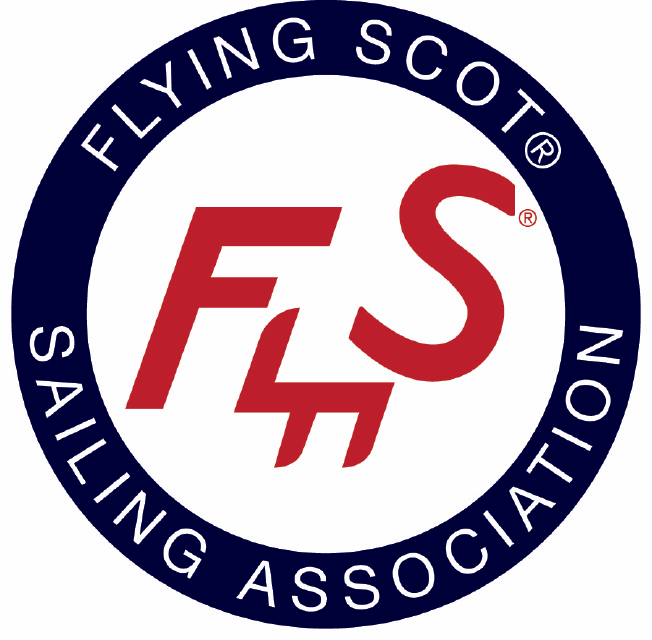How to Build a Fleet
The Clinton Lake Sailing Association is a sailing club located in Central Illinois between Bloomington-Normal, Champaign-Urbana, and Decatur. The club features a large outdoor pavilion, 2 ramps, and a small dock with a large grass area for mast-up storage. When it comes to amenities, CLSA is very rustic and simple relative to most sailing clubs you'll see when traveling to regattas. There is no indoor clubhouse. If you don't like using our porta potty you will need to walk a couple hundred yards to the marina building. In recent years we added running water and a shower inside our storage shed. This year we added solar powered electricity in our pavilion and we feel like we're living large. If someone paid no attention to our sailing and fleet development programs, they might call our sailing club modest. If our sailing programs are considered, our little sailing club is anything but modest. We've more than doubled our membership in the past 5 years. We can barely keep up the influx of prospective members wanting to take introductory lessons. We've added so many boat owners over the past several years we are now concerned we'll run out of room. Today, our dock is regularly congested with sailors on a regular basis. It wasn't always like this.

Shortly after we joined CLSA in 2012, the club was in dire straits and on the verge of sinking. My dad and I were attracted to the club mostly because it was nearby and had a good-sized Flying Scot fleet. Just after we joined we found out half the Flying Scot fleet was planning to move away. You might say it was bad luck, but the club's sailor recruitment program was simply to host a poorly-publicized open house at the beginning of the season and then hope sailors stumbled across our website. I guess it worked for me, but sailors were leaving the club faster than they were coming in. I would later learn this was happening at sailing clubs across the country. I saw the writing on the wall and seriously considered selling my boat and switching back to golf, but we had a fun and capable team who were committed to turning things around. Our little Flying Scot fleet would effectively provide the leadership and innovation that would transform our club from a sinking ship into a powerful navy. The success that came along with this effort has transcended our fleet and has started to transcend our club. The Thistle fleet at our club adopted our model and is now following the same growth trajectory. Other Flying Scots fleets from around the country have reached out for advice and have since shared their success stories with me. I hope that sharing this story further will help more fleets, more classes, and more clubs to be more successful at growing our sport.
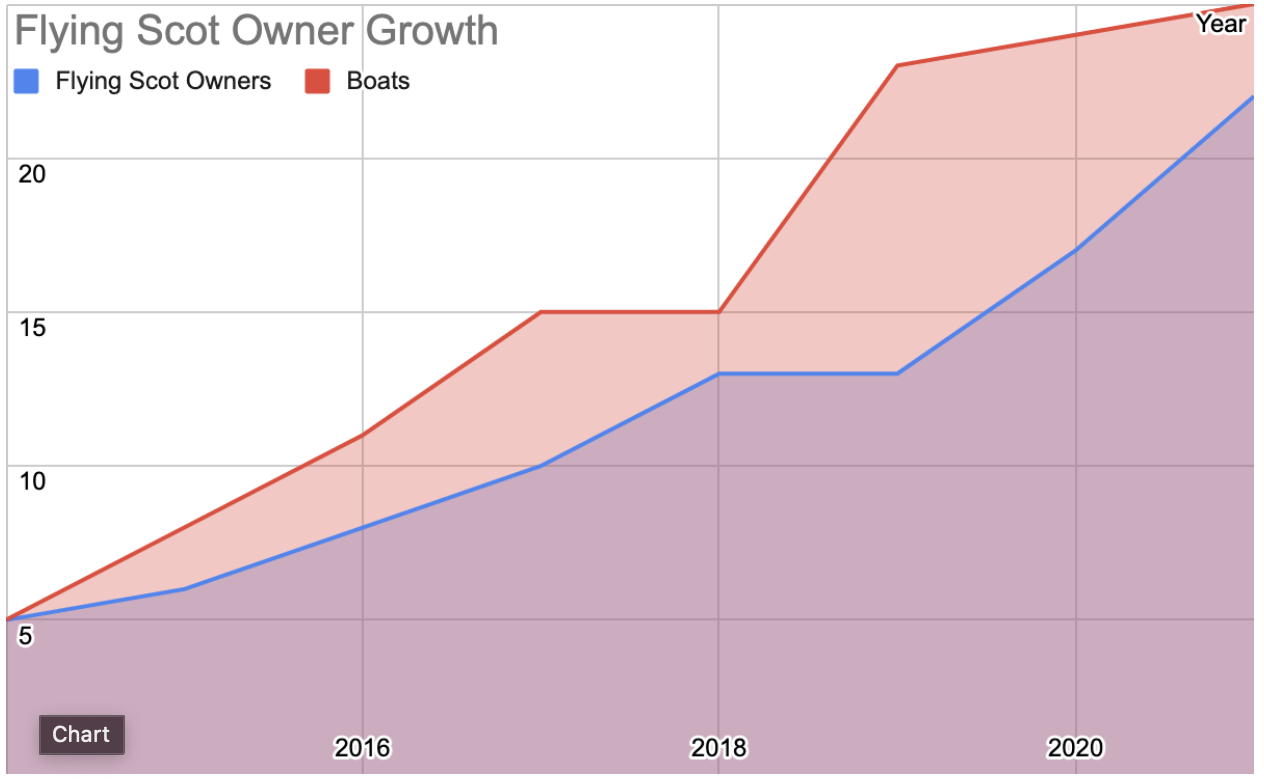
Our team initially decided that our formula going forward would be to provide a pathway to Flying Scot sailing with mentorship being a central component. Boat ownership would not be required to sail with us. Multiple fleet members agreed to purchase and fix up extra 'fleet building' boats so that more prospective boat owners could sail with us on Wednesday nights. Our formula would be to teach prospective boat owners to sail and then coach and mentor them every step of the way. Our race-ready fleet development boats would be fixed up nicely and loaned out to prospective boat owners on Wednesday night once they were qualified to skipper. Our fleet development boats weren't advertised for sale, but we would offer these boats for sale internally to our regular Wednesday night sailors and we'd use the money to buy more fleet development boats. More skippers and more development boats would allow us to bring in more prospective boat owners at a faster rate and continue to grow our fleet. As you can see from the graph, it worked.
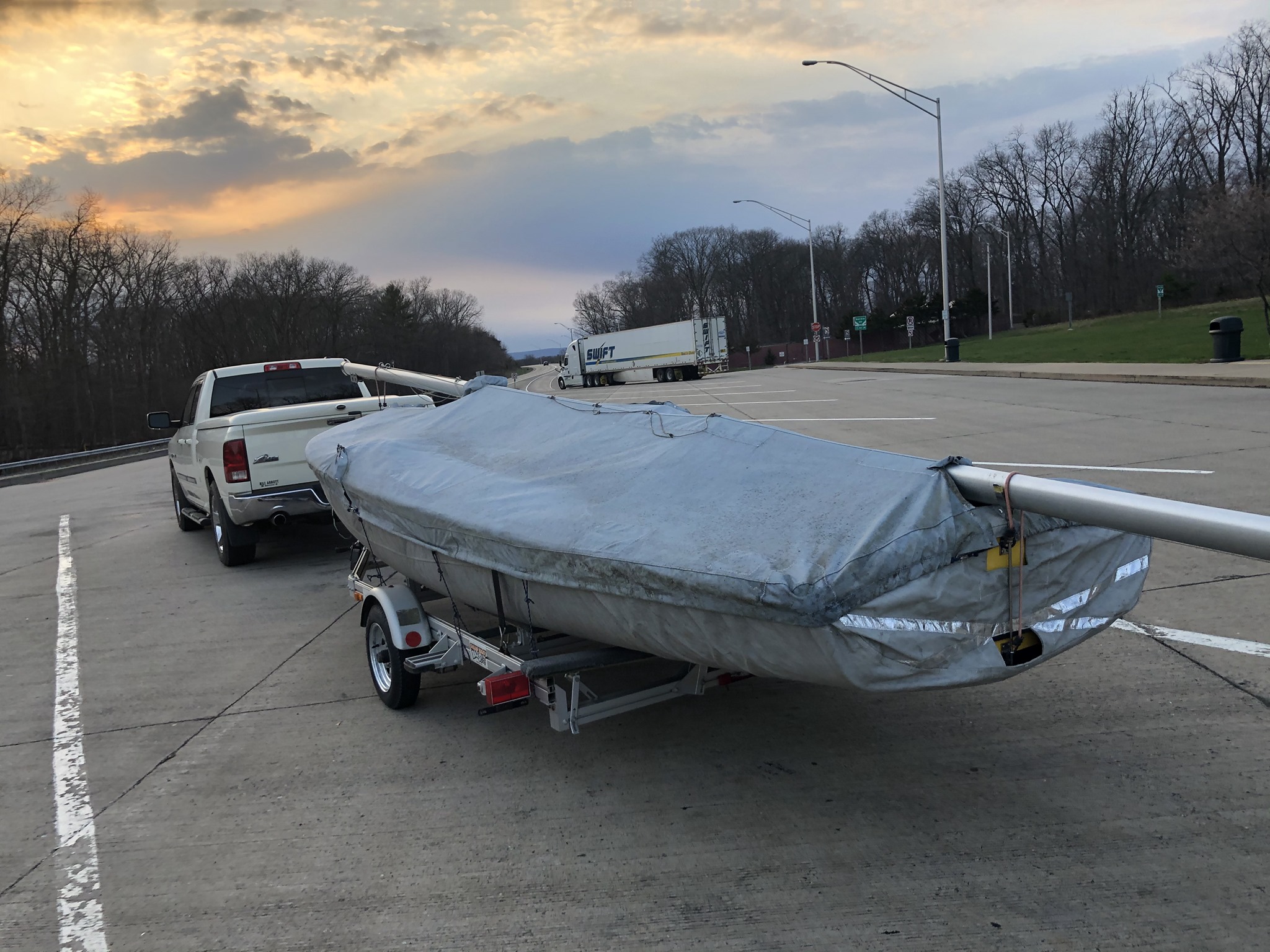
When we purchased and brought in new-to-us development boats, we fixed them up nicely and maintained them as if these were our primary racing boats. Having a club rental boat that is falling apart that nobody wants is better than nothing, but kind of defeats the purpose. The last thing most busy people want is a big project with unknown repair expenses. Having to drive a great distance not knowing for sure if the Flying Scot is as-advertised is not an attractive proposition for most prospective boat owners. Our development boats would have a good set of hand-me-down racing sails, a cover, and zero deferred maintenance. We’d even make sure they were all rigged the exact same way. We generally did a great job at finding deals and could offer the boat locally for $1000 to $2000 less than we could sell it for by selling it to an outside buyer. These boats were often race tested by our best racers in club races and were proven fast. Prospective boat owners who sailed these boats at our Wednesday night beer can races quickly grew more and more attached.
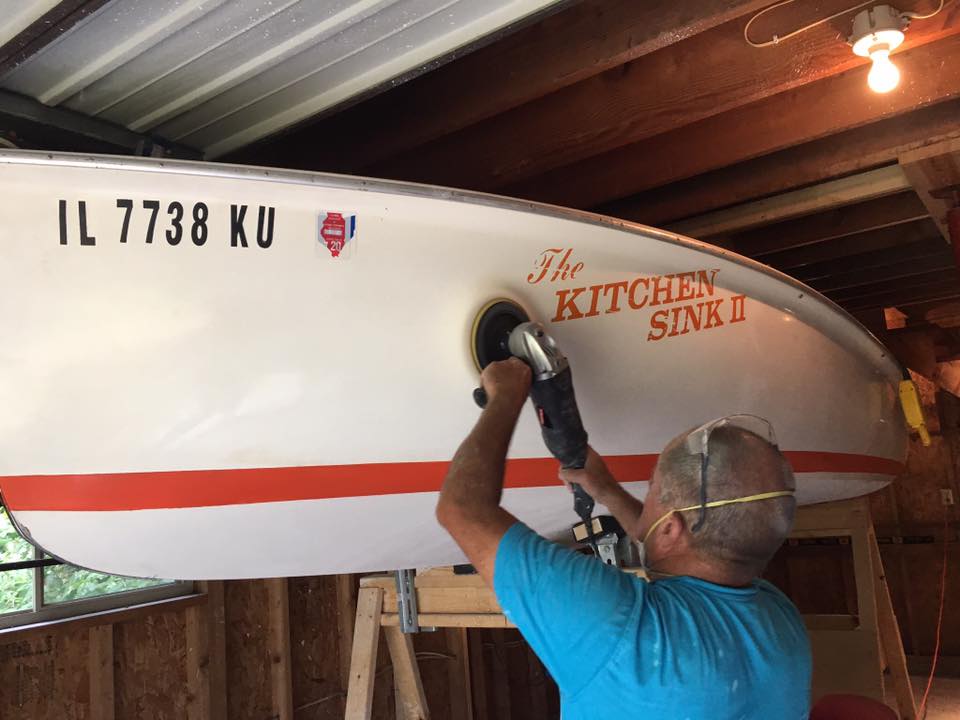
We only sold development boats to a buyer if they were Wednesday night regulars or were likely to become regulars. Spending all the time finding and fixing up a boat only to have it sit on shore on Wednesday nights would undermine our fleet building effort. As part of the purchase agreement, a buyer must agree to let us borrow their boat on Wednesday night whenever they are not available to sail with us. Also, the buyer of a fleet development boat must agree not to remove the boat from the club and sell it back to us if they moved away or moved on. If a buyer prefers to buy a Flying Scot with no strings attached, we'd happily help them find a good one if we didn't already have one lined up. Every time we sold a boat we would go out and buy another and repeat the process.
I feel that bridging the gap between that first lesson and boat ownership is more important to growing our sport than getting them on the water in the first place. We accomplished this by purchasing fleet building boats. It can be very difficult for a small club or fleet with a limited budget to build this bridge. At first we had the desire to build a fleet but no pathway. Except for a few crewing slots here and there, the only pathway to sailing for our guests was for them to buy their own boat. As fleet builders wanting to grow sailing, we knew we needed to help prospective boat owners down the path a little further and give them more opportunities to get addicted. The pathway I describe in this article might not be an exact fit for your club, but I’ve observed other clubs support fleet growth by offering club-owned loaner boats, boat rentals, leasing programs, etc.
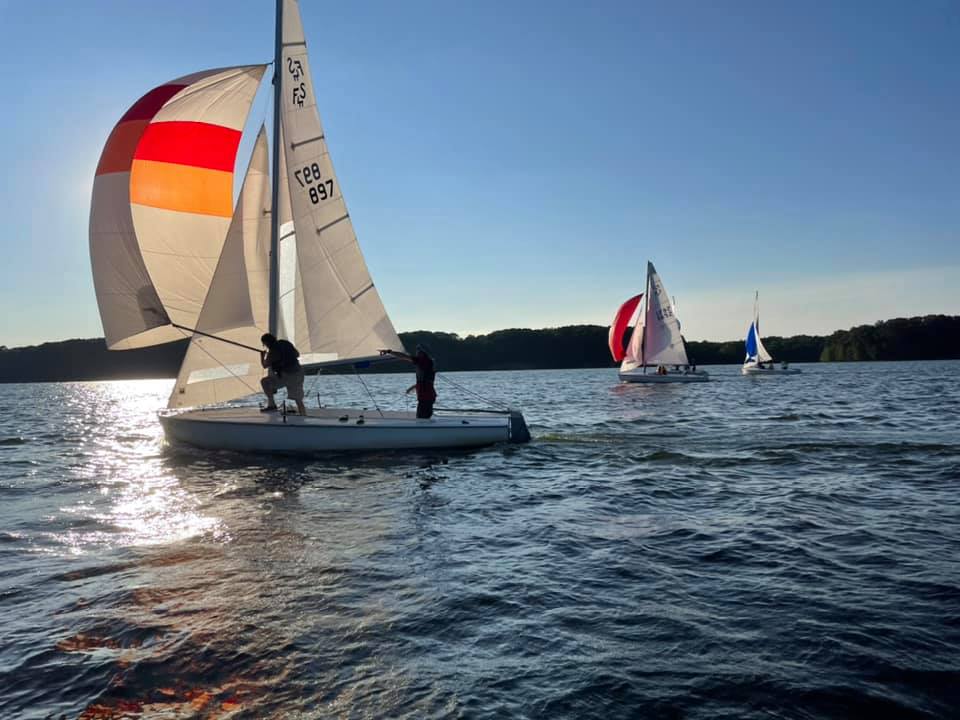
As someone who believes we want to grow the sport through boat ownership, I think having limitations on boat ownership alternatives is a good idea since boat ownership is the ultimate goal. There is not much to be desired if you provide nice sailboats and make them available without any restrictions. In our Flying Scot fleet, loaner boats are only made available on Wednesday nights and on the weekends with fleet captain supervision. At the same, we have never leaned on someone to buy a boat. We simply tell everyone up front we hope they will eventually buy a boat but they are welcome to sail with us as long as they want, whether they buy a boat or not. We’ve never been tempted to change that policy.
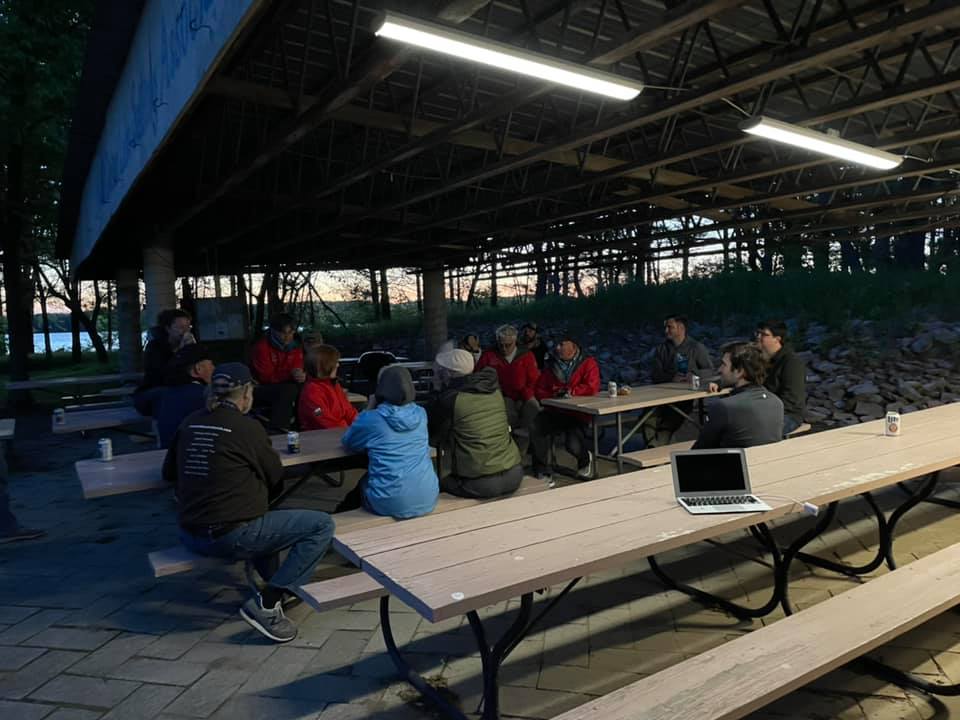
We can’t make someone try sailing and we can’t make them come back. What we can do is make sailing fun and less intimidating so prospective boat owners are more likely to come back. Today, our instructor team offers $25 lessons (limit 1x per adult) on the weekends to prospective boat owners. Our goal is not to teach someone how to sail but instead to show them a good time so they will want to come back and sail with us on Wednesday nights. Our Wednesday beer can races are very casual and fun. Our volunteer sailing coordinators make it stress free and assign skipper and crew for maximum learning and maximum fun. If you want to come out and play with us on Wednesdays, you simply need to sign up and show up. We sail 3-up every Wednesday evening until sunset and then enjoy hot dogs and cold beverages in the pavilion. The fun on shore is almost as fun as the sailing. Not all clubs are set up for weeknight sailing activities, but offering a casual stepping stone to competitive racing for the purpose of fleet development has proven to be a key ingredient in our recipe to grow a fleet. Both new sailors and experienced sailors have a great time and look forward to sailing on Wednesday evenings. It can be a challenge for some competitive racers to learn how to race casually and sail with newbies, but everyone now sees the big picture and eventually bought into our fleet development program. If we only offered an open house once a year and then scheduled races every weekend, our racing program would have died. If we hadn't offered a bridge to competitive racing by offering casual racing opportunities as a stepping stone, many of the people on our racing team today would not have survived the jump.

Our program did stall out early on because we couldn’t bring people through the door fast enough. We tried to get people in faster by partnering with community colleges to help get the word out. We offered sailing classes through the college and they would send class catalogs to thousands and thousands of households. We still could not bring prospective boat owners in as fast we wanted so we turned to social media. Today we use facebook advertising exclusively as it is simple, affordable, and effective. Even with more capacity and more instructors, we cannot keep up with demand as spreading the word through facebook ads has worked very well for us. We budgeted $1000 this year and barely spent half of that budget because we had to turn the ads off early because our lessons and classes filled up very quickly. Creating a post with a picture of someone having fun on a sailboat with an inviting description does require someone to be a marketing expert. Learning how to boost a post and target the local population and specific age groups takes about 5 minutes. You can start small and test different messages to see what works best at getting people to sign up.

Our introductory lesson program today introduces prospective boat owners to our club all season long. We conducted 66 2-hour sailing lessons in 2021 with volunteer instructors. So far 5 of those students who took lessons have already purchased sailboats of their own. We are busy people and have limited volunteer energy, so the Flying Scot instructor team limits introductory lessons to 1x per adult and we decided against offering a structured learn to sail course. Structured learn to sail classes are great but are resource intensive, so we’ve decided to focus our volunteer energy on teaching and coaching our regular Wednesday night sailors who are most likely to continue sailing with us. Our Wednesday sailors learn and develop at their own pace and comfort level. We have the ability to develop them as fast as they are willing, but we are careful not to push too hard.
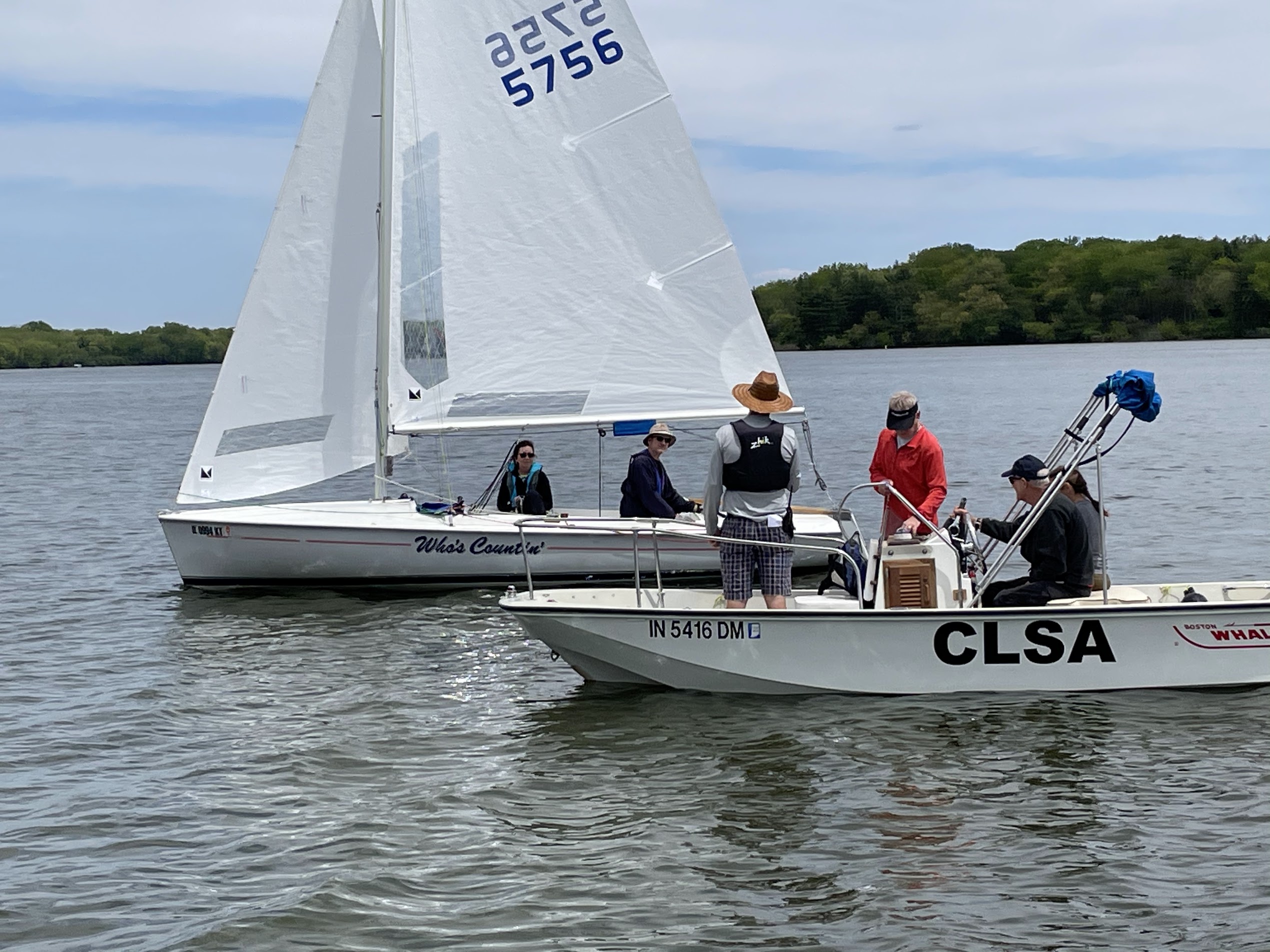
Throughout this fleet building endeavor, we learned to appreciate that not all skippers enjoy teaching newbies as much as others. Today, we require new sailors to first take a lesson before we’ll assign them to a boat on Wednesday night. Before this requirement, many skippers felt it was too much for us to take a newbie off the street with no training and throw them on their sailboat. Even skippers who do not enjoy teaching and coaching as much as others still want to support fleet building. With this in mind, we adjusted the dials in hopes to find a more fun balance for everybody. We now require first-time sailors to watch Learn to Sail in 10 Minutes so they know port from starboard before they drive out to lake for a lesson. We now offer these lessons separately on the weekends with a dedicated instructor team that enjoys teaching newbies. At the lesson we spend at least an hour showing students how to rig the boat so they can help with setting up the boat if they come back on Wednesdays. Now when someone shows up for a Wednesday night for the first time, they have plenty to learn but already have a strong foundation to build on.
The local Thistle fleet at our club immediately noticed what we were doing and followed our lead. The Thistle is a high performance race boat but unlike the Flying Scot is not a great teaching boat. Our Thistle fleet captain creatively introduced an intro to sailing program using the club-owned lasers to help feed sailors into the Thistle fleet. The Thistle fleet later introduced Thistle Thursdays after witnessing the popularity of Flying Scot Wednesdays and the Thistle fleet has since exploded, growing from 4 to 14 Thistles in just five years. As a Flying Scot fleet builder, you’d think the friendly competition would hurt our growth, but we still added 5 more Flying Scot owners in 2021. Life is good at CLSA with not just one, but now with two thriving one-design fleets. I point this out because there is no one-size-fits-all way to grow a sailboat club. Introducing adults to sail on lasers is less conventional but it’s proven to be an attractive pathway for those who wish to sail on high performance race boats. Different fleets and different clubs can adjust the recipe to fit their taste, but establishing an attractive pathway and helping new sailors navigate that pathway is something everyone needs to be doing in one way or another if we want to grow our sport.
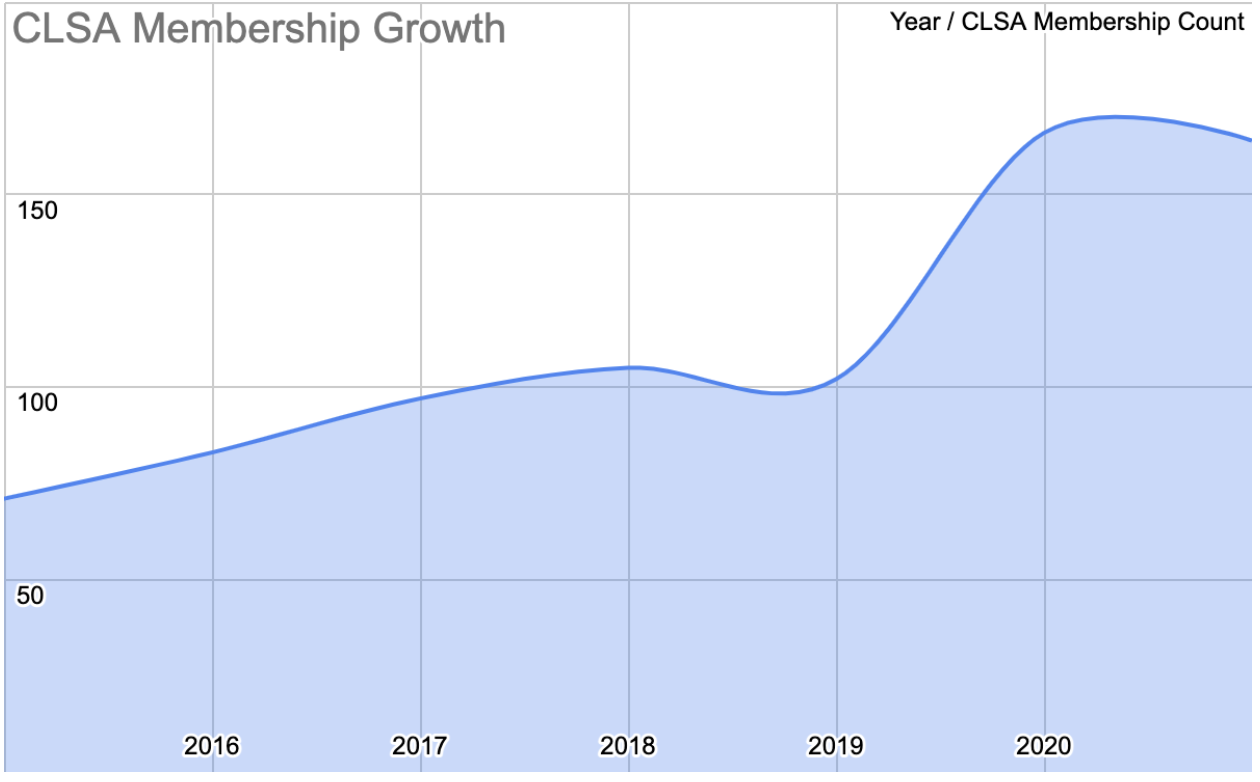
In 2015, our club membership count was 71 and the overall sailing activity on our lake was deteriorating. Today we have 164 memberships and we have become a thriving sailing club. The Flying Scot fleet at Clinton Lake initiated this growth by providing leadership and innovation by implementing this model and inspiring the Thistle fleet to follow our lead. I’ll never forget the feeling of despair watching boats leave our fleet and club without any realistic plan to bring more in. Our club has always had good and friendly people with the ability to implement and execute this formula. The fleet development programs at our club have been transformational. The change started with a small handful of Flying Scots owners not willing to give up and I feel this formula can even be initiated with a single boat owner willing to buy a second fleet development boat. To experience growth like ours, you will eventually need a good team of people who are willing to invest time back into growth and development.
I would like to extend a very special thank you to the Flying Scot Foundation for providing our fleet grant to purchase a fleet development boat in support of our lesson program. This made our program less reliant on the generosity of individual owners and helped our fleet grow even faster. If you have the enthusiasm to grow a fleet but lack the funds, I recommend you contact your class association and foundation if one exists.
